Quantitative Expression of a Slight Deviation of the Impact Angle in a Collision Atomizer
Abstract
:1. Introduction
2. Theoretical Background
2.1. Impact Nozzle Atomization Mechanism
2.2. The Mechanism of the Cavitation Effect
3. Experimental Setup and Measurement Strategy
3.1. Experimental Setup
3.2. Measurement Method of Atomization Characteristics
4. Results and Discussion
4.1. Analysis of the Generation of Cavitation Effect
4.2. Analysis of Atomization Morphology Change
4.3. Analysis of the Influence of Collision-Angle Microdeviations on Atomization Characteristics
5. Conclusions
Author Contributions
Funding
Institutional Review Board Statement
Informed Consent Statement
Data Availability Statement
Acknowledgments
Conflicts of Interest
References
- Benjamin, M.A.; Jensen, R.J.; Arienti, M. Review of Atomization: Current Knowledge and Future Requirements for Propulsion Combustors. At. Sprays 2010, 20, 485–512. [Google Scholar]
- Umemura, A. Handbook of Atomization and Sprays Theory and Applications; Springer: New York, NY, USA, 2011. [Google Scholar]
- Yang, L.-J.; Zhao, F.; Fu, Q.-F.; Cui, K.-D. Liquid Sheet Formed by Impingement of Two Viscous Jets. J. Propuls. Power 2014, 30, 1016–1026. [Google Scholar]
- Zhao, F.; Yang, L.-J.; Mo, C.-J.; Li, X.-D. Characteristics of Sheet Formed by Collision of Two Elliptical Jets at Short Impact Distance. J. Fluids Eng. 2016, 138, 051201. [Google Scholar]
- Zhao, F.; Yang, L.-J.; Mo, C.-J.; Qin, L.-Z. Spray Characteristics of Unlike Impinging Jets. J. Propuls. Power 2017, 33, 1260–1271. [Google Scholar]
- Zhang, P.; Wang, B. Effects of elevated ambient pressure on the disintegration of impinged sheets. Phys. Fluids 2017, 29, 042102. [Google Scholar]
- Zhang, S.; Gou, W.; Wang, Y.; Zhang, J.; Zheng, Y. Direct numerical simulation of atomization by jet impact using moving particle semi-implicit method with GPU acceleration. Comput. Part. Mech. 2021, 9, 499–512. [Google Scholar]
- Ryan, H.M.; Anderson, W.E.; Pal, S.; Santoro, R.J. Atomization characteristics of impinging liquid jets. J. Propuls. Power 1995, 11, 135–145. [Google Scholar]
- Huang, J.C.P. The break-up of axisymmetric liquid sheets. J. Fluid Mech. 1970, 43, 305–319. [Google Scholar]
- Heidmann, M.F.; Priem, R.J.; Humphrey, J.C. A study of sprays formed by two impinging jets. Natl. Advis. Comm. Aeronaut. Tech. Note 1957, 3835, 1–34. [Google Scholar]
- Heidmann, M.F.; Humphrey, J.C. Fluctuations in a Spray Formed by Two Impinging Jets. J. Am. Rocket Soc. 1952, 22, 127–131. [Google Scholar]
- Santoro, R.J.; Anderson, W.E.; Ryan, I.H.M. Impact Wave-Based Model of Impinging Jet Atomization. At. Sprays 2006, 16, 791–806. [Google Scholar]
- Negeed, E.-S.R.; Hidaka, S.; Kohno, M.; Takata, Y. Experimental and analytical investigation of liquid sheet breakup characteristics. Int. J. Heat Fluid Flow 2011, 32, 95–106. [Google Scholar]
- Ma, D.-J.; Chen, X.-D.; Khare, P.; Yang, V. Atomization patterns and breakup characteristics of liquid sheets formed by two impinging jets. Aiaa J. 2011, 97, 1–14. [Google Scholar]
- Lai, W.-H.; Huang, W.; Jiang, T.-L. Characteristic Study on the Like-Doublet Impinging Jets Atomization. At. Sprays 1999, 9, 277–289. [Google Scholar]
- Xia, J.; Zhang, Q.; Wang, J.; He, Z.; Zhou, Q.; Zhou, D.; Qian, Y.; Ju, D.; Lu, X. Experimental study of the effect of various collision angles and critical conditions on marine engine’s twin-spray collision process. Int. J. Engine Res. 2022. [Google Scholar] [CrossRef]
- Wang, F.; Chen, J.; Zhang, T.; Guan, H.; Li, H. Experimental Study on Spray Characteristics of ADN/Water Based Gel Propellant with Impinging Jet Injectors. Propellants Explos. Pyrotech. 2020, 45, 1357–1365. [Google Scholar]
- Suñol, F.; González-Cinca, R. Low Weber number jet collision regimes in microgravity. Phys. Fluids 2017, 29, 112106. [Google Scholar]
- Cui, J.; Lai, H.; Li, J.; Ma, Y. Visualization of internal flow and the effect of orifice geometry on the characteristics of spray and flow field in pressure-swirl atomizers. Appl. Therm. Eng. 2017, 127, 812–822. [Google Scholar]
- Taylor, G. The Dynamics of Thin Sheets of Fluid. II. Waves on Fluid Sheets. Proc. R. Soc. Lond. 1959, 253, 296–312. [Google Scholar]
- Ma, Y.; Cui, J.; Wang, H.; Tan, J. Impacts of Micro-Deviations of Aperture on the Characteristics of Collision Atomization Field. Appl. Sci. 2022, 12, 4685. [Google Scholar]
- Zhang, Z.; Li, Y.; Wang, Z.; Hu, Q.; Wang, D. Experimental study on radial evolution of droplets in vertical gas-liquid two-phase annular flow. Int. J. Multiph. Flow 2020, 129, 103325. [Google Scholar]
- Kong, L.; Lan, T.; Chen, J.; Wang, K.; Sun, H. Breakup Processes and Droplet Characteristics of Liquid Jets Injected into Low-Speed Air Crossflow. Processes 2020, 8, 676. [Google Scholar]
- Bareiss, S.; Bork, B.; Bakić, S.; Tropea, C.; Irsig, R.; Tiggesbäumker, J.; Dreizler, A. Application of femtosecond lasers to the polarization ratio technique for droplet sizing. Meas. Sci. Technol. 2013, 24, 25203. [Google Scholar]
- Labs, J.E.; Parker, T.E. Multiple-scattering effects on infrared scattering measurements used to characterize droplet size and volume fraction distributions in diesel sprays. Appl. Opt. 2005, 44, 6049–6057. [Google Scholar] [PubMed]
- Darakis, E.; Khanam, T.; Rajendran, A.; Kariwala, V.; Naughton, T.J.; Asundi, A.K. Microparticle characterization using digital holography. Chem. Eng. Sci. 2010, 65, 1037–1044. [Google Scholar]
- Berg, M.J.; Videen, G. Digital holographic imaging of aerosol particles in flight. J. Quant. Spectrosc. Radiat. Transf. 2011, 112, 1776–1783. [Google Scholar]
- Mishra, Y.N.; Koegl, M.; Baderschneider, K.; Hofbeck, B.; Berrocal, E.; Conrad, C.; Will, S.; Zigan, L. 3D mapping of droplet Sauter mean diameter in sprays. Appl. Opt. 2019, 58, 3775–3783. [Google Scholar]
- Kapusta, U.J. LIF/Mie Droplet Sizing of Water Sprays from SCR System Injector using Structured Illumination. In Proceedings of the Ilass Europe. 28th European Conference on Liquid Atomization and Spray Systems, Valencia, Spain, 6–8 September 2017. [Google Scholar]
- König, G.; Anders, K.; Frohn, A. A new light-scattering technique to measure the diameter of periodically generated moving droplets. J. Aerosol Sci. 1986, 17, 157–167. [Google Scholar]
- Sun, J.; Zhang, H.; Fan, W.; Chen, S. Aspect ratios comparison of ellipsoidal particles through interferometric out-of-focus images. J. Opt. Soc. Am. A 2021, 38, 395–400. [Google Scholar]
- Zhang, H.; Li, Z.; Sun, J.; Fu, Y.; Jia, D.; Liu, T. Characterization of particle size and shape by an IPI system through deep learning. J. Quant. Spectrosc. Radiat. Transf. 2021, 268, 107642. [Google Scholar]
- Ma, Y.R.; Cui, J.; Tan, J. Interferometric laser imaging for droplet-size measurement in spray. Appl. Opt. 2022, 61, 5496. [Google Scholar] [CrossRef]

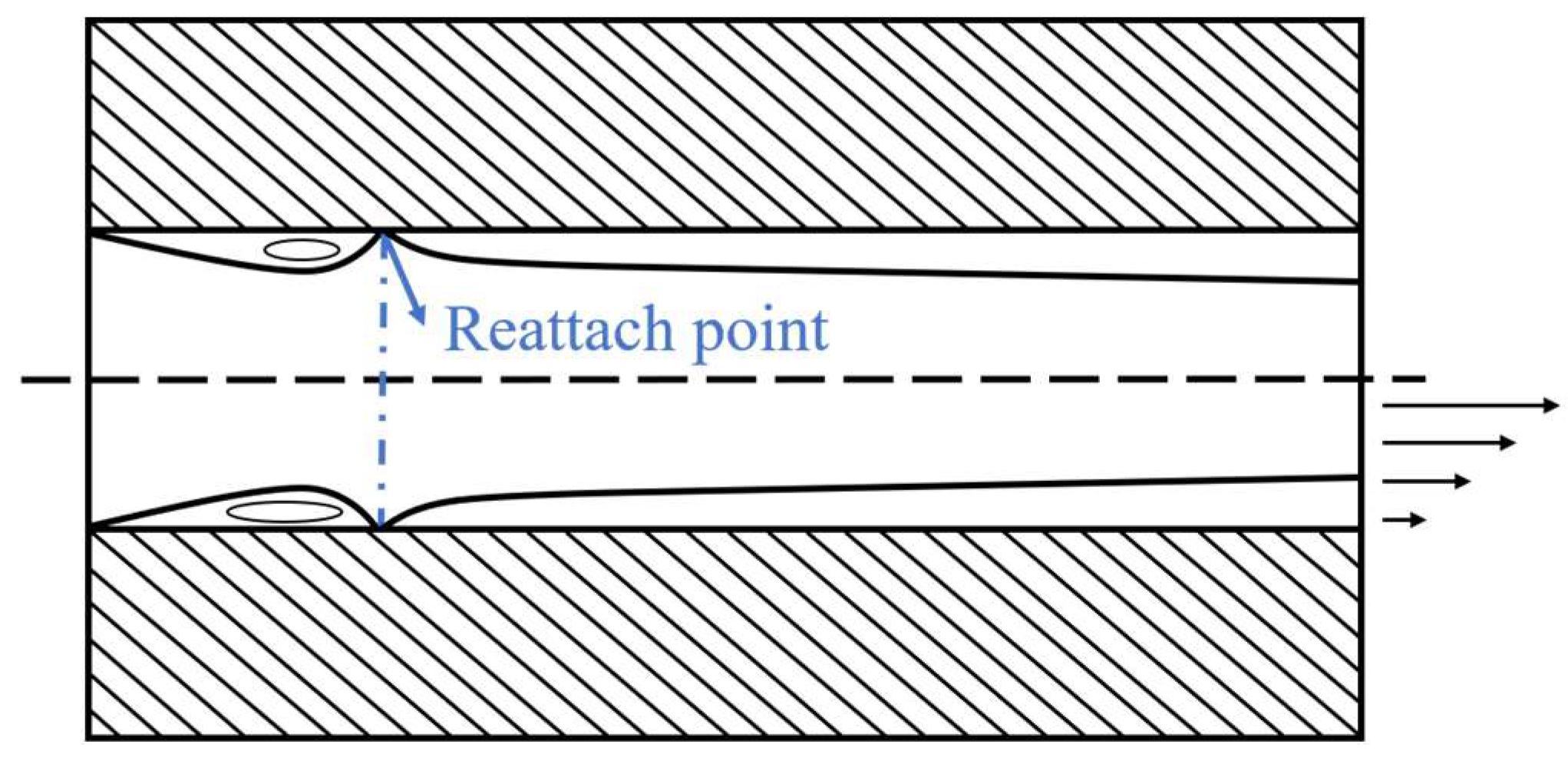


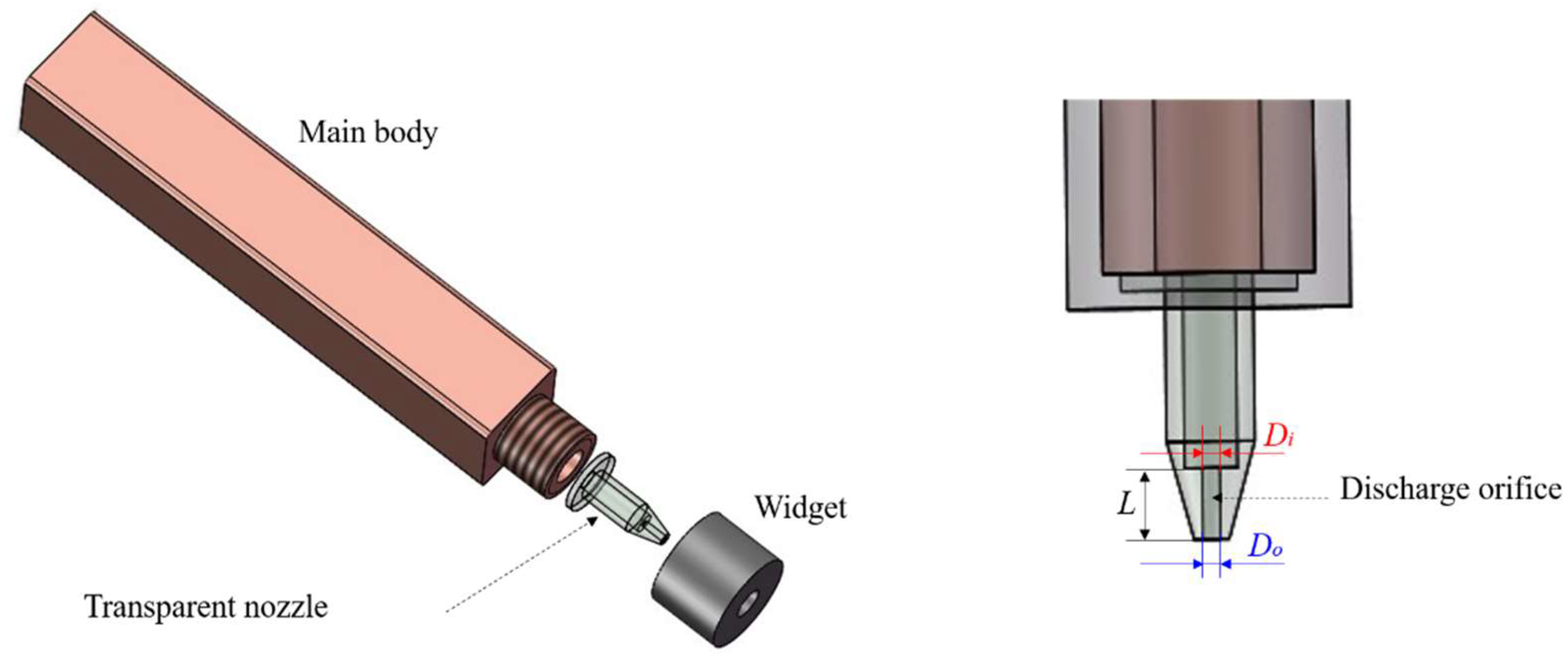
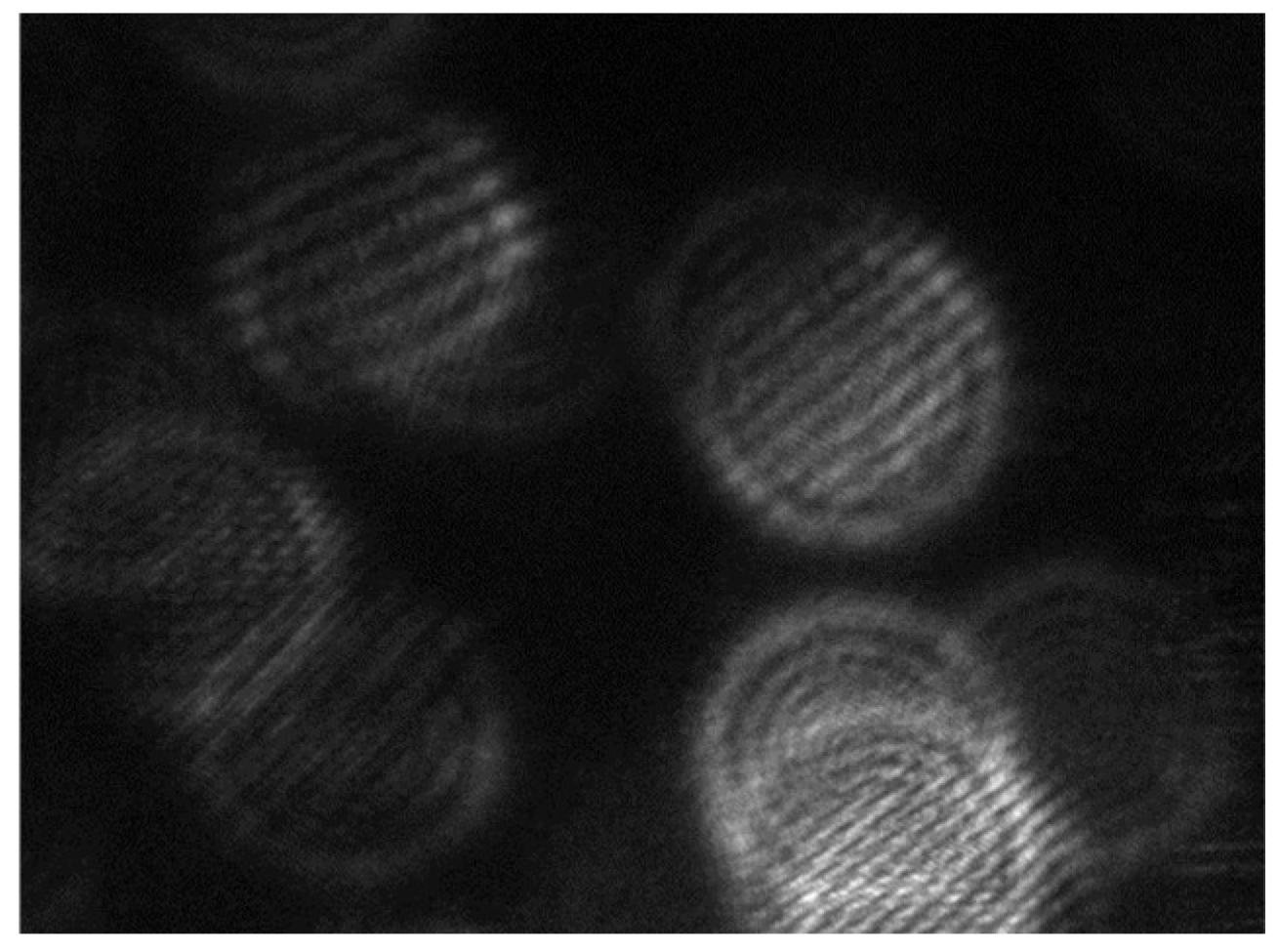

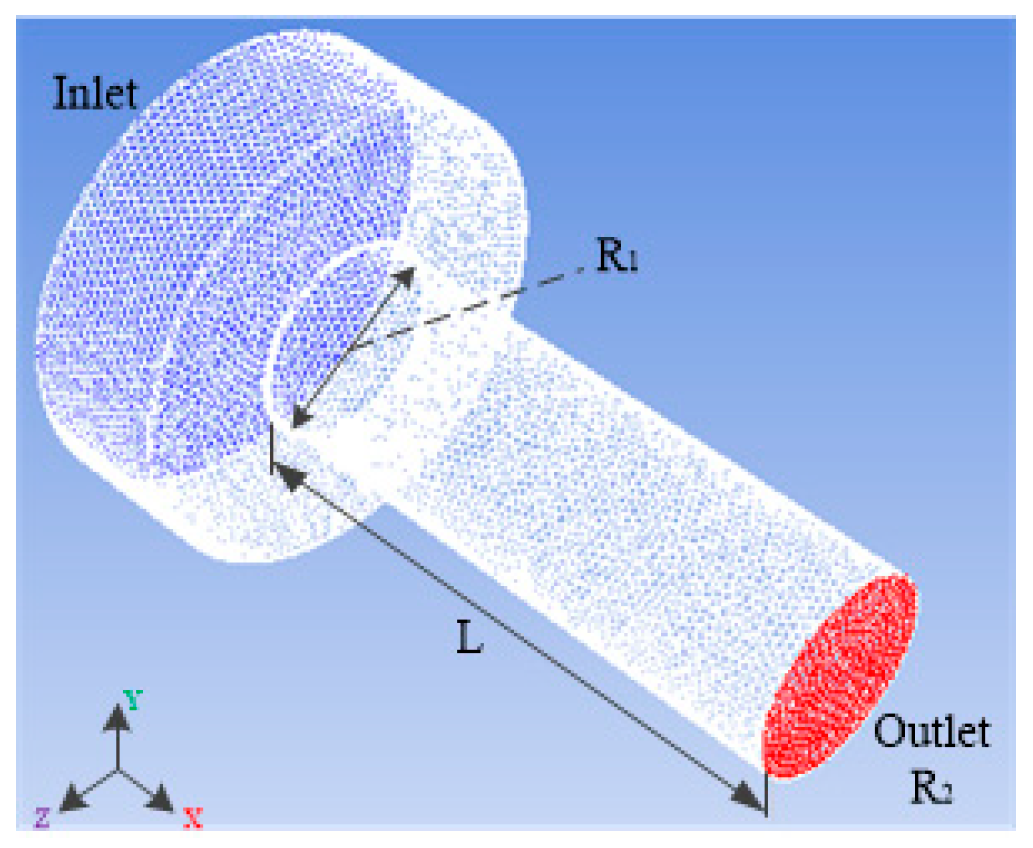
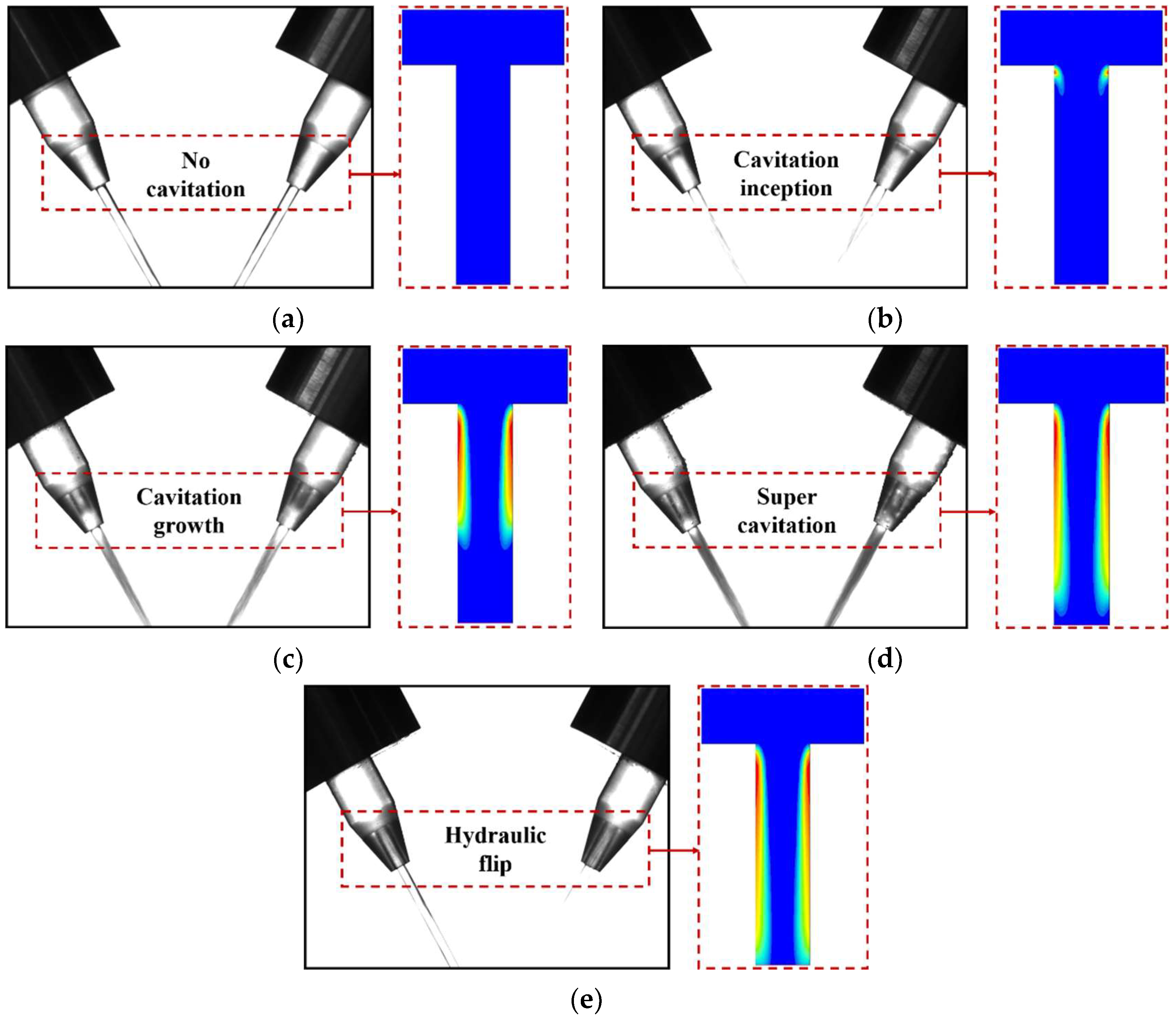


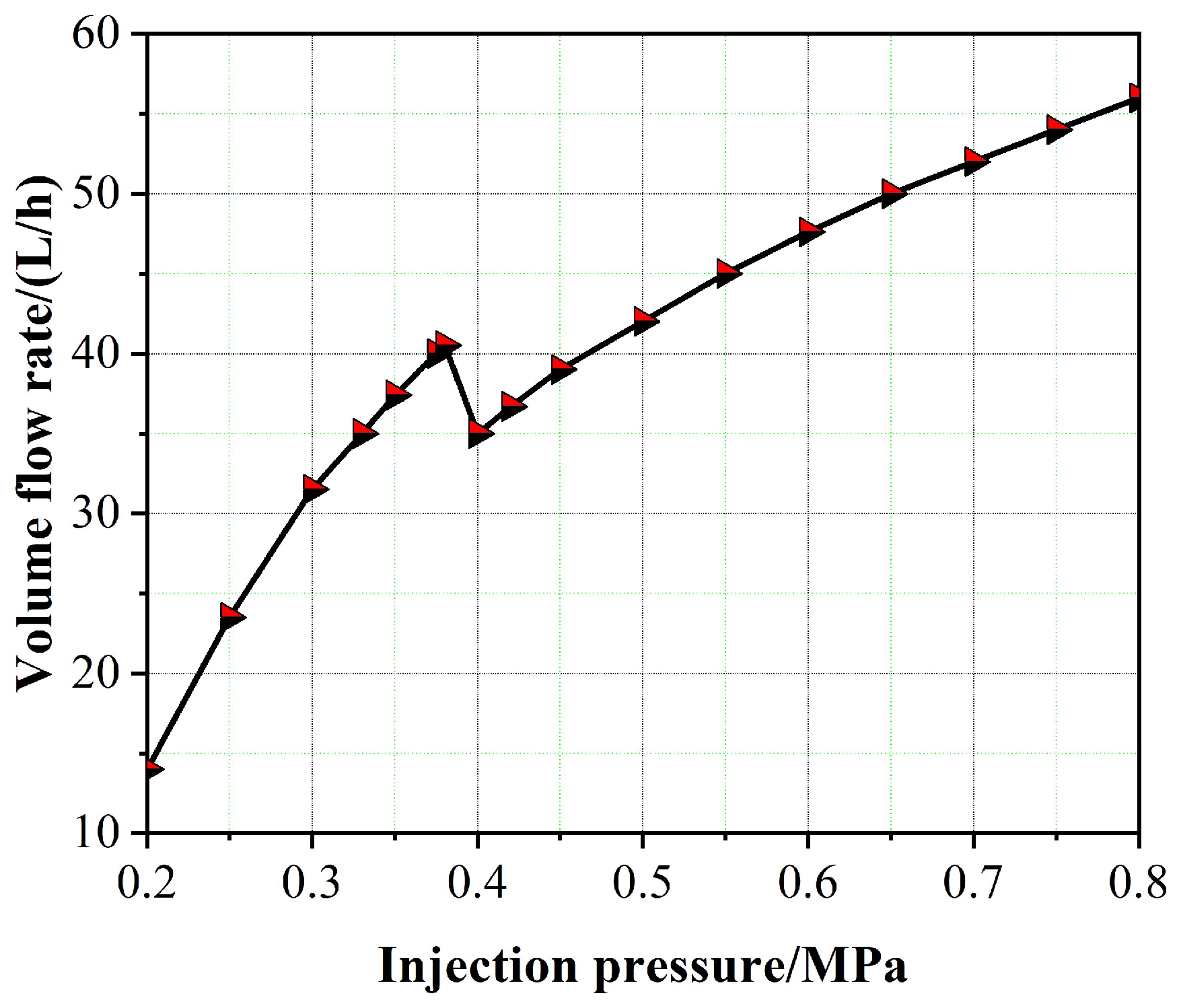
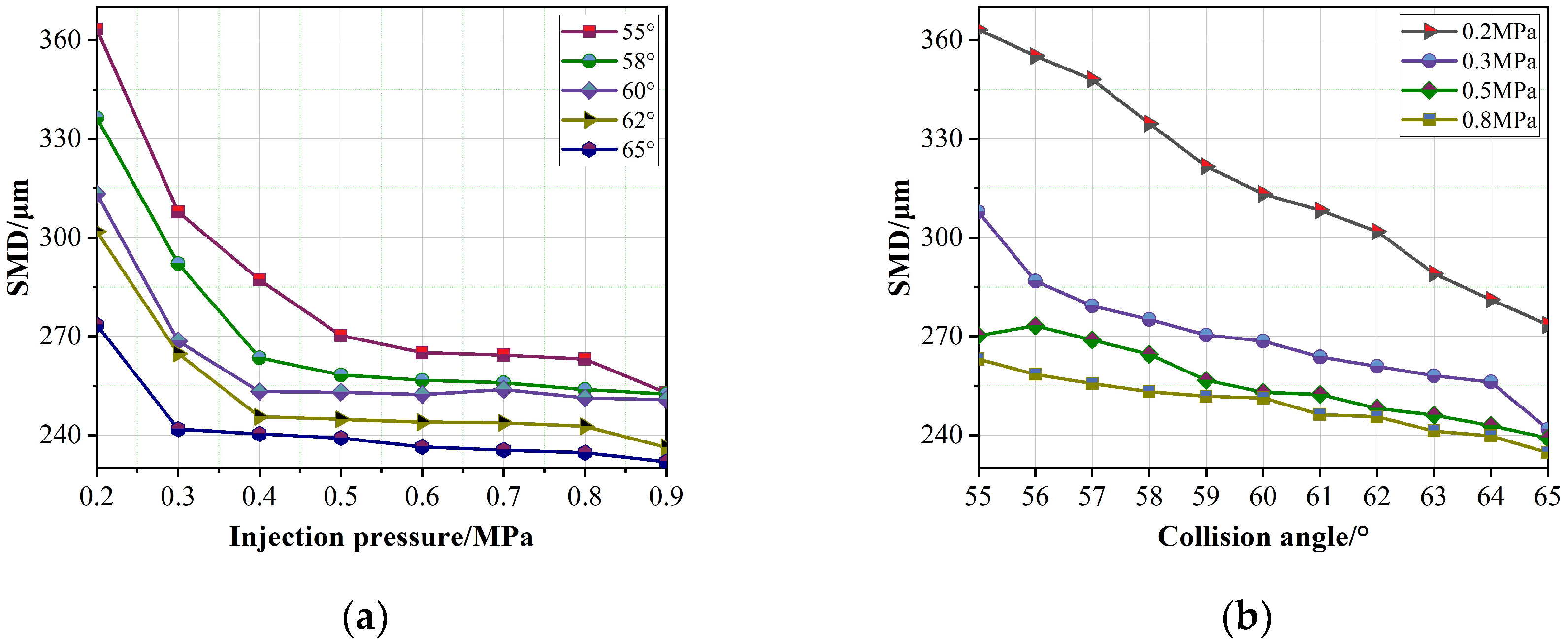

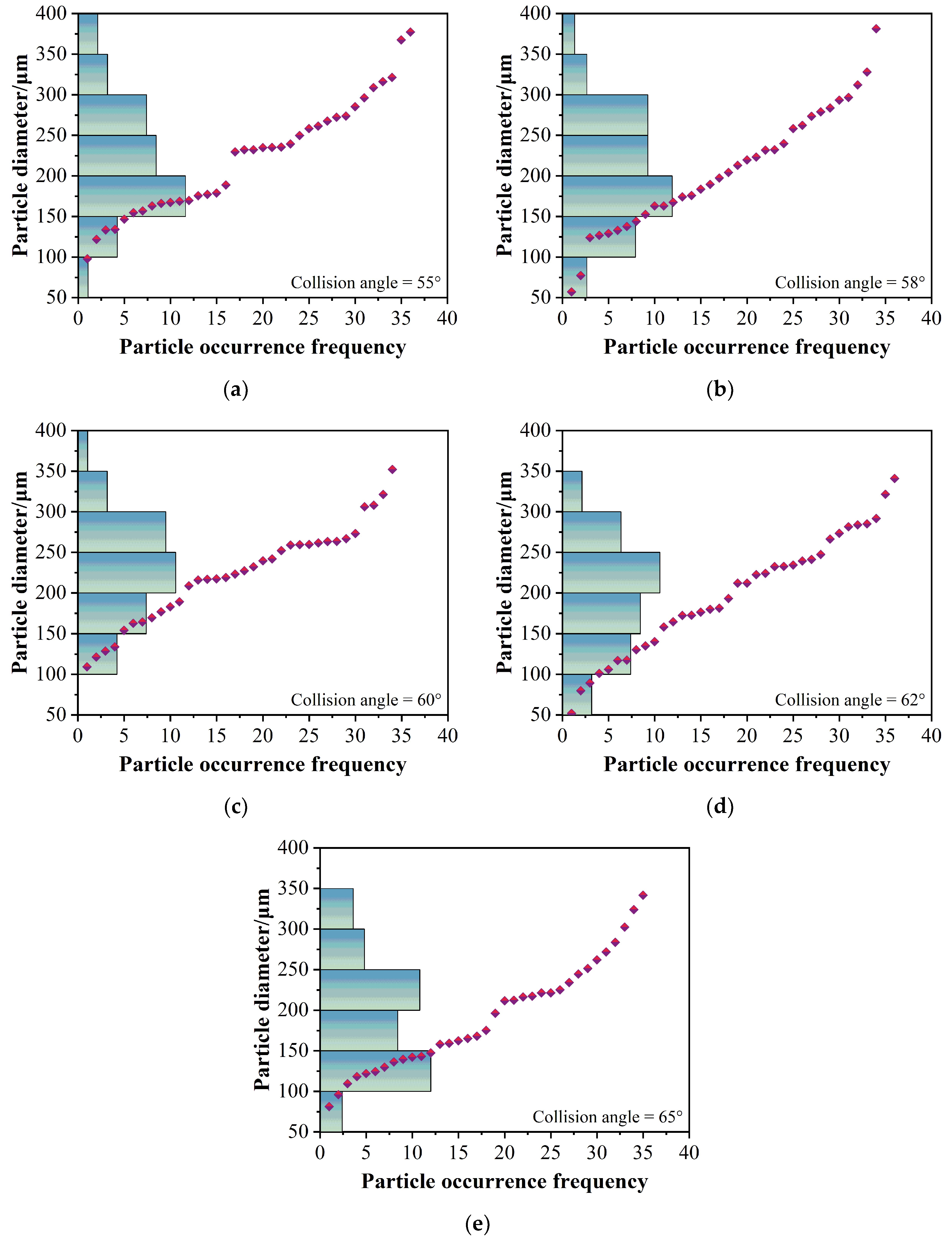
Publisher’s Note: MDPI stays neutral with regard to jurisdictional claims in published maps and institutional affiliations. |
© 2022 by the authors. Licensee MDPI, Basel, Switzerland. This article is an open access article distributed under the terms and conditions of the Creative Commons Attribution (CC BY) license (https://creativecommons.org/licenses/by/4.0/).
Share and Cite
Ma, Y.; Cui, J.; Tan, J. Quantitative Expression of a Slight Deviation of the Impact Angle in a Collision Atomizer. Machines 2022, 10, 771. https://doi.org/10.3390/machines10090771
Ma Y, Cui J, Tan J. Quantitative Expression of a Slight Deviation of the Impact Angle in a Collision Atomizer. Machines. 2022; 10(9):771. https://doi.org/10.3390/machines10090771
Chicago/Turabian StyleMa, Yarui, Jiwen Cui, and Jiubin Tan. 2022. "Quantitative Expression of a Slight Deviation of the Impact Angle in a Collision Atomizer" Machines 10, no. 9: 771. https://doi.org/10.3390/machines10090771



